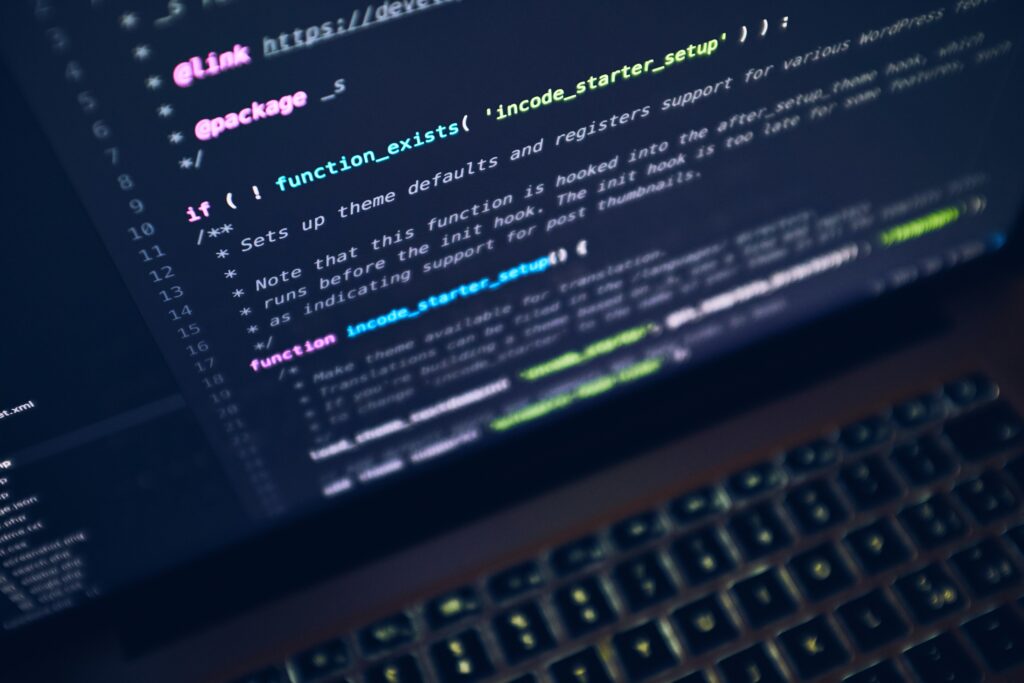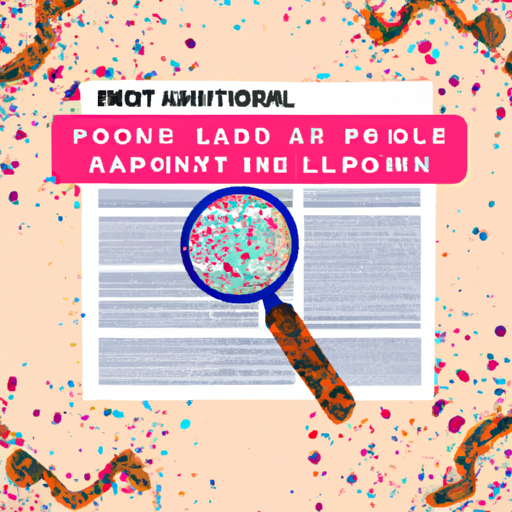In the realm of education, where tradition and innovation collide, the concept of integrating AI into classrooms has gained significant attention. As an enthusiastic advocate of educational technology, I am fascinated by the potential benefits AI can bring to teaching practices. However, before we fully embrace this technological revolution, it is crucial to examine the potential drawbacks and challenges that may arise with AI implementation in education. Join me as we explore the intricacies of merging AI and education, and uncover the hurdles that need to be overcome to successfully integrate these two worlds.

Lack of personalized learning
In traditional classroom settings, instruction is often delivered in a one-size-fits-all manner, neglecting the unique learning needs and preferences of individual students. This is where AI can play a crucial role in personalizing education. However, there are challenges that can hinder its effectiveness.
Limited ability to tailor instruction
One of the challenges with implementing AI in education is the limited ability to tailor instruction to each student’s specific needs. While AI can analyze vast amounts of data and provide recommendations, it may struggle to fully understand the complexities of individual learners. This could result in generic suggestions that fail to address the specific weaknesses and strengths of students.
Difficulty in addressing diverse learning needs
Every student is unique, with diverse learning styles and needs. Whether it’s a visual learner who benefits from visual aids or a kinesthetic learner who thrives on hands-on activities, catering to these diverse needs can be challenging for AI. It may struggle to adapt and provide varied teaching strategies that engage and support every learner effectively.
Ethical concerns
Implementing AI in education raises several ethical concerns that need careful consideration in order to protect students’ privacy, promote fairness, and ensure transparency.
Privacy and data security risks
AI systems thrive on vast amounts of data, which raises concerns regarding student privacy. With AI capturing and analyzing personal information, there is a risk of data breaches and unauthorized access to sensitive information. Safeguarding student data is crucial to maintain trust and ensure the well-being of students.
Equity and fairness issues
Another ethical concern is the potential for AI to perpetuate existing inequalities within the education system. If AI algorithms are designed with inherent biases or if resources and access to AI tools are not distributed equally, certain groups of students may be disproportionately disadvantaged. It is essential that AI implementation in education prioritizes equity and fairness to ensure equal opportunities for all.
Lack of transparency in decision-making
AI systems can make decisions or provide recommendations based on complex algorithms, which may not always be transparent to educators, students, or administrators. This lack of transparency can lead to a lack of trust in the technology and its capabilities. It is crucial for AI systems to be transparent, allowing users to understand how decisions are reached and ensuring accountability in the educational process.
Dependence on technology
While technology has the potential to revolutionize education, an overreliance on AI can come with its own set of challenges.
Reliability and technical issues
Technology is not immune to glitches, failures, or technical issues. The dependence on AI systems for various educational tasks could result in disruptions if the technology malfunctions or experiences downtime. Reliability concerns raise questions about the impact on student learning, particularly when there is a heavy reliance on AI for instruction or assessment.
Potential for loss of critical thinking and problem-solving skills
As AI systems become more advanced and capable, there is a risk of students becoming overly dependent on technology for problem-solving and critical thinking. If students heavily rely on AI tools to provide solutions or answers, there is a potential loss of the skills necessary to think independently, analyze information critically, and solve complex problems. Striking a balance between AI assistance and fostering essential cognitive skills is pivotal.
Cost and accessibility
While the potential benefits of AI in education are promising, the cost and accessibility are challenges that need to be addressed for widespread adoption.
Financial burden on educational institutions
Implementing AI can be costly for educational institutions, especially for those with limited resources. The initial cost of acquiring AI technology, the need for training and support, and ongoing maintenance expenses may strain educational budgets. It is essential to ensure that the benefits outweigh the financial burden, and that adequate resources and funding are provided to schools and institutions.
Unequal access to AI tools and resources
Another challenge is the potential for unequal access to AI tools and resources. Schools and educational institutions in economically disadvantaged areas may struggle to provide the same level of access and opportunities as those in more affluent areas. This digital divide can further exacerbate existing educational inequalities and hinder the potential benefits of AI in education. Efforts must be made to ensure equitable access to AI technology and resources for all students and schools.

Teacher-student relationship
The relationship between teachers and students is a fundamental component of education, and AI implementation can impact this connection and student engagement.
Impact on human connection and empathy
AI, as advanced as it may be, cannot replace the human connection that occurs between teachers and students. The warmth, empathy, and emotional support that teachers provide are essential for students’ overall well-being and academic success. The increased use of AI in the classroom could potentially diminish the importance of these human qualities, creating a less nurturing and empathetic environment.
Limited student engagement and interaction
While AI can provide personalized learning experiences, it may also lead to reduced student engagement and limited interaction. Students may become passive recipients of information, rather than actively participating in discussions and collaborative activities. Maintaining an appropriate balance between AI-driven instruction and opportunities for active student engagement and interaction is crucial to foster a stimulating and inclusive learning environment.
Training and expertise
Successfully integrating AI into the education system requires adequate training and support for teachers, as well as specialized knowledge and skills.
Need for teacher training and support
Teachers play a vital role in guiding and supporting students’ learning journey. In order to effectively implement AI tools and resources, teachers need training and ongoing support to familiarize themselves with the technology and its potential uses in the classroom. Professional development programs should be provided to equip teachers with the necessary skills and knowledge to utilize AI effectively.
Requirement for specialized AI knowledge and skills
In addition to teacher training, there is a growing need for educators with specialized AI knowledge and skills. These individuals can provide technical support, develop AI-driven curriculum, and help ensure the ethical and effective implementation of AI in education. Ensuring a sufficient number of professionals with expertise in AI and education is vital for successful integration.

Unintended reinforcement of biases
AI systems are not free from biases, and their use in education can unintentionally reinforce existing biases or inequalities.
Hidden biases in AI algorithms
AI algorithms are only as good as the data they are trained on. If the data used to train AI systems contains biases or reflects existing inequalities, those biases can be perpetuated in the recommendations or decisions made by the AI. It is essential to be aware of these potential biases and actively work towards minimizing them to create a fair and inclusive educational environment.
Reinforcement of existing educational inequalities
The implementation of AI in education may inadvertently widen the gap between those with access to technology and those without. Students from disadvantaged backgrounds may not have the same opportunities to benefit from AI tools, exacerbating existing educational inequalities. Efforts must be made to ensure that AI implementation in education promotes equity and bridges rather than further divides the educational gap.
Overemphasis on standardized testing
An overemphasis on standardized testing is a concern in education, and the introduction of AI can perpetuate this narrow focus.
Narrow focus on test performance
AI systems excel at data analysis, and this can lead to a disproportionate focus on test scores and performance metrics. While assessments are necessary, the emphasis on standardized testing can limit the scope of education, neglecting the development of critical thinking, creativity, problem-solving, and other essential skills. It is crucial to view AI as a tool that supports holistic development rather than simply a means to measure performance.
Neglect of holistic development
The holistic development of students encompasses a range of skills beyond what can be measured by standardized tests. Collaboration, creativity, emotional intelligence, and adaptability are just a few of the areas that are crucial for students’ overall growth. The introduction of AI should not overshadow the importance of nurturing these skills and considering the holistic development of each student.

Limited emotional intelligence
AI systems excel at analyzing data and providing objective information, but they may lack the ability to detect and respond to emotional cues.
Inability to detect and respond to emotional cues
One of the limitations of AI is its inability to detect and respond effectively to emotional cues from students. Emotional intelligence plays a significant role in teaching and learning, and it requires human sensitivity and empathy. Because AI systems cannot fully understand or respond to emotions, they may struggle to provide the emotional support and guidance that students may need during their educational journey.
Absence of empathetic support
Teachers often provide empathetic support to students, addressing their emotional needs and fostering their well-being. While AI systems can provide valuable academic guidance, they are unable to replicate the empathy and human connection that comes from a caring teacher. The absence of empathetic support may leave students feeling isolated or unsupported, hindering their overall educational experience.
Future job displacement
The rise of AI raises concerns about the potential replacement of certain roles in the education system, leading to concerns about unemployment and job insecurity.
Potential for replacing certain roles with AI
AI has the potential to automate certain tasks within the education system, such as grading papers, generating lesson plans, or providing individualized feedback. While this may result in increased efficiency and reduced workload for educators, it also raises concerns about job displacement. It is crucial to strike a balance between AI-driven automation and the preservation of human roles that require creativity, adaptability, emotional intelligence, and complex decision-making.
Concerns about unemployment and job insecurity
The potential displacement of jobs due to AI implementation in education raises concerns about unemployment and job insecurity among educators. As technology advances and AI becomes more capable, there may be a shift in the demands and requirements of teaching positions. Educators may need to adapt their skills to embrace the opportunities and challenges presented by AI, and there may be a need to create new roles that complement rather than replace human expertise.
In conclusion, while the implementation of AI in education offers great potential for enhancing teaching practices and personalizing learning experiences, it is important to address the challenges that come with it. These challenges include the need to tailor instruction, ethical concerns, dependence on technology, cost and accessibility issues, impact on the teacher-student relationship, training and expertise requirements, avoidance of biases, overemphasis on standardized testing, limited emotional intelligence, and worries about future job displacement. By carefully considering these challenges and taking proactive measures, we can maximize the benefits of AI in education while ensuring a holistic, equitable, and empathetic approach to learning.






